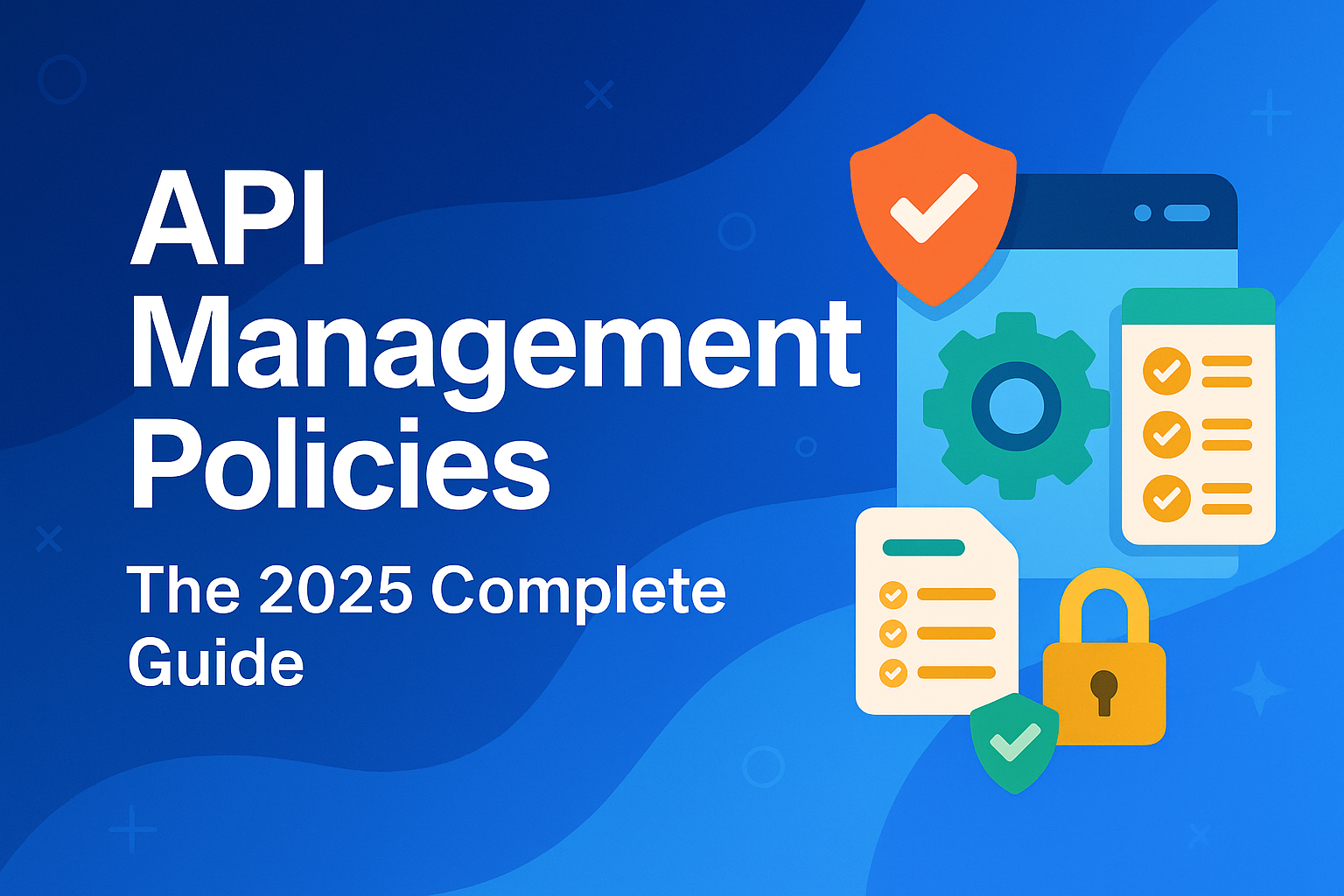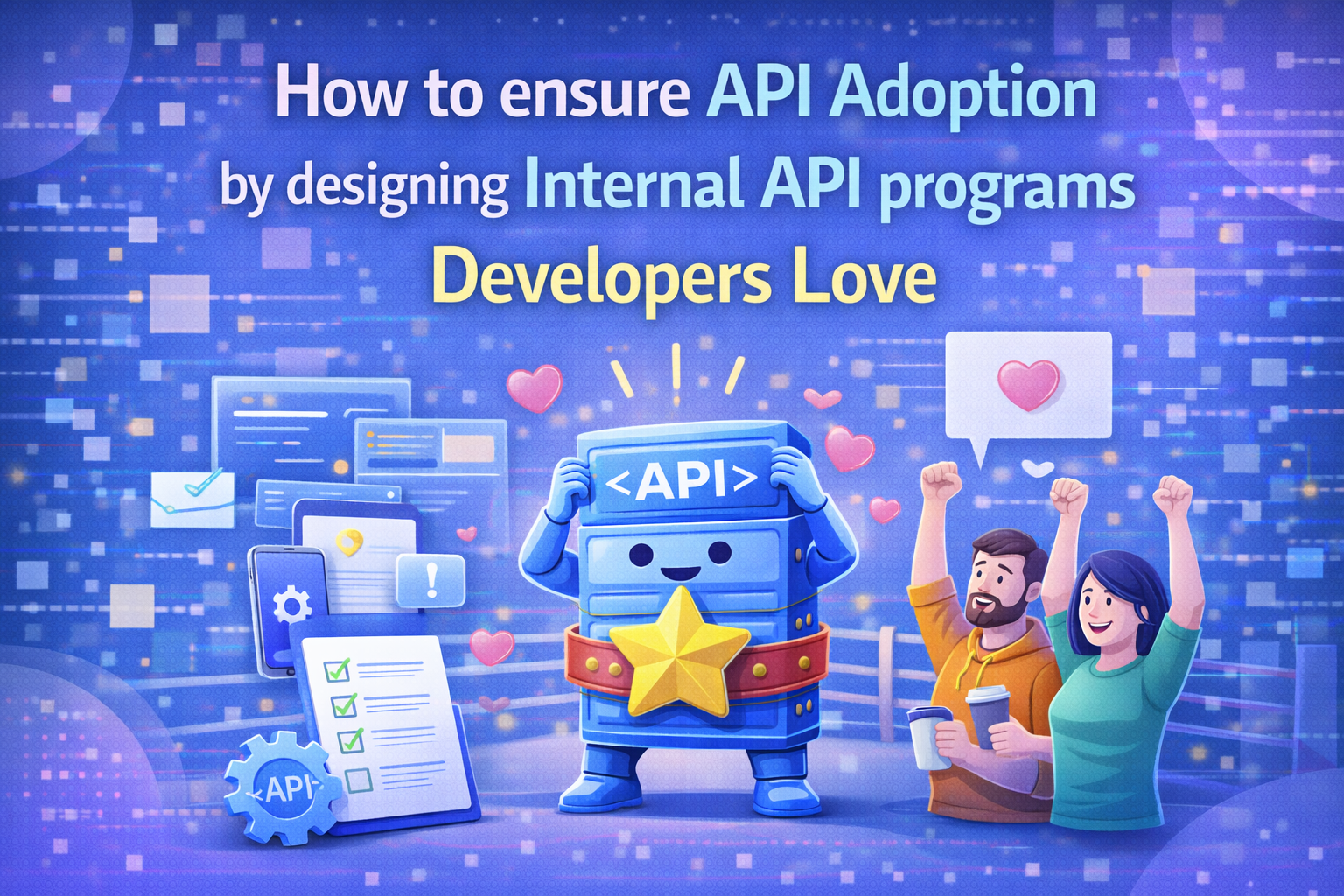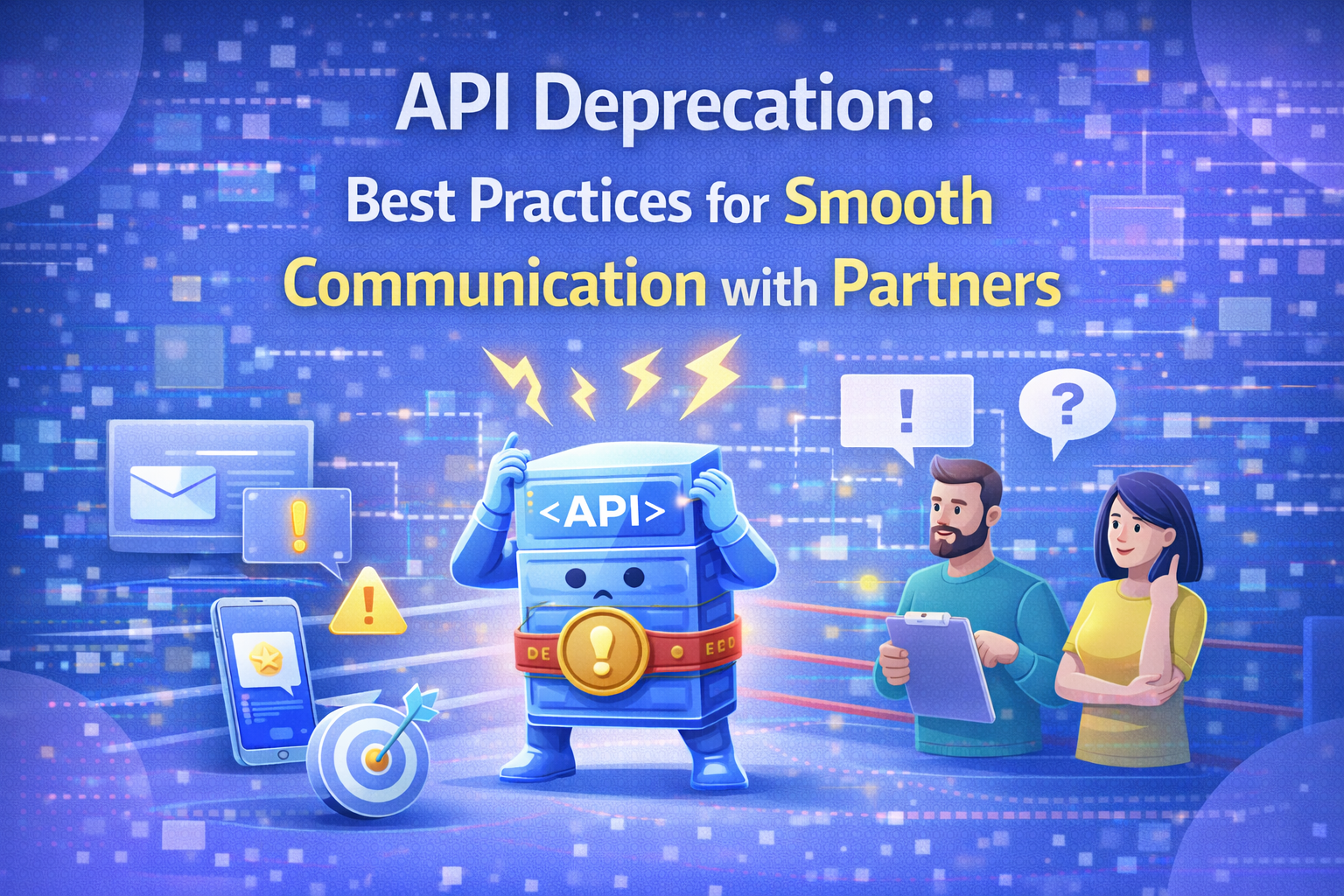
API management policies act as automated rules that secure, optimize, and control how APIs operate—governing everything from authentication to rate limiting and data transformation. They ensure reliability, compliance, and performance across complex API ecosystems.
DigitalAPI simplifies policy management with an AI-powered, centralized platform that unifies gateways, enforces governance, enhances security, and provides deep analytics, helping enterprises standardize API behavior and scale with confidence.
So, what are you waiting for? Get started with DigitalAPI today!
You've built APIs. You've consumed them. You've probably cursed at a few that went down during peak traffic. But here's the thing: managing APIs without proper policies is like running a city without traffic rules.
API management policies are your control layer. They sit between your APIs and the world, making split-second decisions about who gets access, how much data flows through, and what transformations happen along the way. Think of them as intelligent officers for your digital services.
Whether you're dealing with rate limiting that prevents your servers from melting, authentication policies that keep bad actors out, or transformation rules that make your legacy systems play nice with modern apps, these policies handle the heavy lifting. They're working behind the scenes while you focus on building features that matter.
Although this sounds like you might need to do a lot of work, you actually don't need to. Modern API management platforms make implementing these policies feel less like rocket science and more like configuration. Let's dive into how they actually work.
What are API management policies?
API management policies are executable rules that define how API requests and responses are processed, secured, and transformed as they flow through your API gateway.
Think of policies as programmable middleware that intercepts every API call. When a request hits your API, it doesn't go straight to your backend service. Instead, it passes through a series of policy checkpoints, each one potentially modifying, validating, or blocking the request based on predefined rules.
These policies operate at different stages of the API lifecycle. Some kick in when requests arrive (authentication, rate limiting), others work on the way out (response transformation, caching), and some handle backend communication (load balancing, circuit breaking). Each policy has a specific job, but they work together like a well-orchestrated assembly line.
.png)
The importance of having an API management policy
1. Mitigates business risks
Running APIs without policies is like leaving your front door wide open in a sketchy neighborhood. Your entire digital infrastructure becomes a sitting duck for hackers. Compliance violations pile up quickly. Customers lose trust when their data gets compromised. One poorly secured endpoint can bring down your whole system, turning a small security gap into a company-wide catastrophe.
API policies act as your security team, catching threats before they explode into expensive disasters. They block suspicious requests automatically and they validate every piece of data flowing through your system. The few hours you spend setting up policies could save you millions in breach costs. This means, you won't have to explain to your CEO why everything's on fire.
2. Operational efficiency and cost reduction
Managing APIs manually is pure torture for your development teams. They're constantly putting out fires instead of building features and someone always needs to manually check who gets access to what. Different services refuse to play nicely together without constant babysitting. If this is the case all the time, it quickly becomes exhausting for everyone involved.
API policies handle all this grunt work automatically while your developers can focus on creating cool stuff instead of firefighting infrastructure problems. Everything runs smoothly on autopilot without human intervention and you spend way less money on operations when systems manage themselves.
Features can ship much faster when teams aren't drowning in maintenance tasks. This way, your team stays sane while your budget stays healthy.
3. Competitive advantage through reliability
Nobody trusts flaky APIs. When your APIs work consistently, partners actually want to integrate with you. Customers stick around instead of jumping ship to competitors. Users never have to deal with those frustrating error pages that make them question your competence.
API policies keep everything running smoothly by preventing random crashes. Response times stay fast even during traffic spikes. User experiences remain seamless regardless of backend complexity and companies with rock-solid APIs grow faster because partners onboard quickly.
They can adapt to market changes without breaking existing integrations, and your reliability becomes your secret weapon that competitors struggle to replicate.
4. Future-proofing your architecture
API policies give you incredible flexibility as your business evolves. New security requirements pop up constantly. Data formats need to change for different clients. Fresh partner integrations demand custom configurations. You can also modify API behavior without touching your core code, which saves months of development time.
This adaptability becomes crucial when regulations shift overnight, and your policies ensure that your API infrastructure handles whatever curveballs come next. With the help of your policies, you can avoid those massive, expensive rebuilds that consume entire quarters.
How do API Management policies work?
Here’s a step-by-step process of how API management policies work:
1. Request Hits the Gateway: When a client sends an API request, it doesn't go directly to your backend servers. Instead, it lands at your API gateway first, which acts as the central control point for all incoming traffic.
2. Authentication Check: The gateway immediately runs authentication policies to verify who's making the request. These policies check API keys, OAuth tokens, or other credentials against your user database. Invalid credentials get rejected instantly.
3. Authorization Verification: Once identity is confirmed, authorization policies determine what this specific user can access. Maybe they're on a basic plan with limited features, or they're a partner with read-only permissions. The policy enforces these rules automatically.
4. Rate Limiting Evaluation: Rate limiting policies count how many requests this client has made recently. If they've exceeded their allowed quota, the policy either blocks the request or queues it for later processing.
5. Request Transformation: Transformation policies modify the request if needed. They might convert XML to JSON, add tracking headers, or restructure data to match your backend's expected format.
6. Backend Processing: The cleaned, validated request finally reaches your backend service. Load balancing policies might distribute it across multiple servers, while circuit breaker policies ensure it doesn't hit failing services.
7. Response Handling: When your backend sends a response, outbound policies take over. They might cache the data for future requests, transform the response format, or mask sensitive information before it leaves your system.
8. Final Delivery: The processed response returns to the client, often enhanced with additional headers or compressed for faster transmission. Throughout this entire journey, monitoring policies collect performance data and generate alerts if anything goes wrong.
This entire process happens in milliseconds, creating a seamless experience for API consumers while giving you complete control over how your APIs behave.
Types of API management policies
1. Security and access control policies
Think of security policies as your API's personal bodyguards. They're constantly checking IDs at the door and making sure troublemakers don't get past. Authentication policies do the basic "who are you?" check by validating API keys, OAuth tokens, or any other credentials people use. If your credentials are fake or expired, you're not getting past this stage.
Authorization policies are where things get interesting because they decide what you can actually touch once you're inside. Maybe you're a free user who can only peek at basic data, or if you're a premium customer with access to more features. IP filtering policies act like geographic bouncers, blocking requests from sketchy locations where hackers love to hang out.
2. Performance and scalability policies
Performance policies are like traffic cops during rush hour, keeping everything flowing smoothly when your APIs get slammed with requests. Rate limiting policies are the heroes here because they prevent that one annoying client from hogging all your server resources. They'll either slow down greedy users or tell them to come back later when things calm down.
Caching policies remember popular responses and serve them lightning-fast without bothering your backend servers. Load balancing policies spread incoming traffic across multiple servers like a smart host distributing party guests so nobody gets overwhelmed.
Circuit breaker policies watch for servers that are having a bad day and redirect traffic elsewhere before everything crashes. Your users stay happy while your infrastructure stays healthy.
3. Transformation and integration policies
Transformation policies are like universal translators for your digital ecosystem. They handle the messy job of making different systems talk to each other when they naturally speak completely different languages. Some clients love JSON while others are stuck with old XML formats, and these policies smooth over those awkward conversations automatically.
Header manipulation policies work behind the scenes, adding useful tracking info or scrubbing out sensitive details before responses leave your system. Protocol conversion policies are lifesavers when you need modern apps to play nicely with legacy systems.
Data enrichment policies can provide additional details to the responses by adding timestamps, location data, or user context that makes everything more useful.
4. Monitoring and analytics policies
Monitoring policies are your API's personal health trackers, constantly checking vital signs and reporting back on how everything's performing. Logging policies capture all the important details about what's happening without accidentally recording people's passwords or credit card numbers.
Alert policies are like smoke detectors for your API infrastructure. They go off when something goes wrong so your team can fix problems before customers start complaining. Audit trail policies keep meticulous records of every API interaction to avoid any compliance failures.
Best policies for API design and governance
1. Establish clear authentication standards
Your authentication strategy needs to be bulletproof from day one because fixing security holes later is like trying to renovate a house while people are still living in it. Choose one primary authentication method and stick with it across all your APIs. OAuth 2.0 works great for most scenarios, while API keys handle simpler use cases effectively.
Document your authentication requirements clearly so developers don't waste time guessing what credentials they need. Set up proper token expiration policies that balance security with user convenience. Nobody wants to re-authenticate every five minutes, but tokens that live forever become security nightmares.
2. Implement consistent rate limiting
Rate limiting prevents your APIs from melting under pressure while keeping costs predictable. Start with generous limits that real users will never hit, then adjust based on actual usage patterns. Different endpoints need different limits because searching a database takes more resources than fetching cached user profiles.
Tiered rate limiting works wonders for monetization strategies. Free users get basic access while premium customers enjoy higher limits and priority processing. Burst allowances let legitimate traffic spike occasionally without triggering false alarms. Your rate limiting policies should feel invisible to normal users but catch abusive behavior before it causes any damage.
3. Enforce data validation and transformation
Input validation policies catch unwanted data before it corrupts your databases or crashes your services. Every API endpoint should validate required fields, data types, and acceptable value ranges. Malformed requests get rejected immediately with helpful error messages that guide developers toward correct usage.
Response transformation policies ensure consistency across your entire API ecosystem. Convert dates to standard formats, normalize currency values, and structure error responses uniformly. These policies eliminate the tedious work of manual data cleanup while improving developer experience significantly.
4. Monitor performance and usage patterns
Analytics policies reveal how people actually use your APIs versus how you think they should use them. Track which endpoints get hit most frequently and identify performance bottlenecks before they become user complaints. Response time monitoring helps you spot degrading services early.
Error tracking policies categorize failures by type and frequency, making debugging sessions much more productive. User behavior analytics show which features developers love and which ones get ignored completely. This data drives smart decisions about where to invest development resources and which legacy endpoints can finally be deprecated without chaos.
5. Plan for versioning and deprecation
Version management policies prevent breaking changes from destroying existing integrations. Semantic versioning helps developers understand what changes to expect when they upgrade. Deprecation policies give partners reasonable notice before removing old endpoints.
Backward compatibility policies determine how long you'll support legacy versions and what migration paths you'll provide. Clear communication policies ensure developers know about upcoming changes through multiple channels. Your API evolution should feel like a guided upgrade path rather than a series of unpleasant surprises that force emergency code rewrites.
Build a custom API management policy with Digital API
Digital API streamlines the entire process of creating and managing custom API policies across your infrastructure. Our AI-powered platform eliminates the complexity of policy configuration while giving you complete control over how your APIs behave.
Here are some key features of Digital API:
- Standardize Governance: Set a common logical policy framework that applies everywhere, irrespective of gateway jargon.
- API sandbox: Test APIs in realistic environments built for growth, simulating production-like responses.
- API Analytics: Get deep insights into API performance, usage trends, and traffic analysis for better decision-making.
- Enterprise-grade Security: Secure your APIs with automated linting, OWASP checks, and policy enforcement.
- Centralize Gateways: Connect multiple gateways to Digital API and publish API definitions to one centralised catalogue.
.png)
Frequently Asked Questions
1. How do I define and apply policies in an API management platform?
Most API management tools like DAC feature policy designers. This is where you can design policies for different categories and parameters like authentication, load balancing, rate limiting, and more.
2. How do I apply throttling, quota, and caching policies to my APIs?
To apply throttling, quota, and caching policies, you need an API management tool like DAC. These tools provide policy designers where you can design policies as per your needs.
3. How can I use policies to prevent abuse and data leakage?
Rate limiting policies prevent DDoS attacks by blocking excessive requests from single sources. IP filtering policies blacklist suspicious addresses or geographic regions. Authentication policies ensure only authorized users access sensitive endpoints.
4. What’s the difference between inbound, outbound, and backend policies?
Inbound policies execute when requests arrive at your API gateway, handling authentication, rate limiting, and request transformation before reaching your backend services. Backend policies manage communication between the gateway and your internal services, including load balancing, circuit breaking, and retry logic.
Outbound policies process responses before they return to clients, handling response transformation, caching, data masking, and compression.
You’ve spent years battling your API problem. Give us 60 minutes to show you the solution.
.svg)







